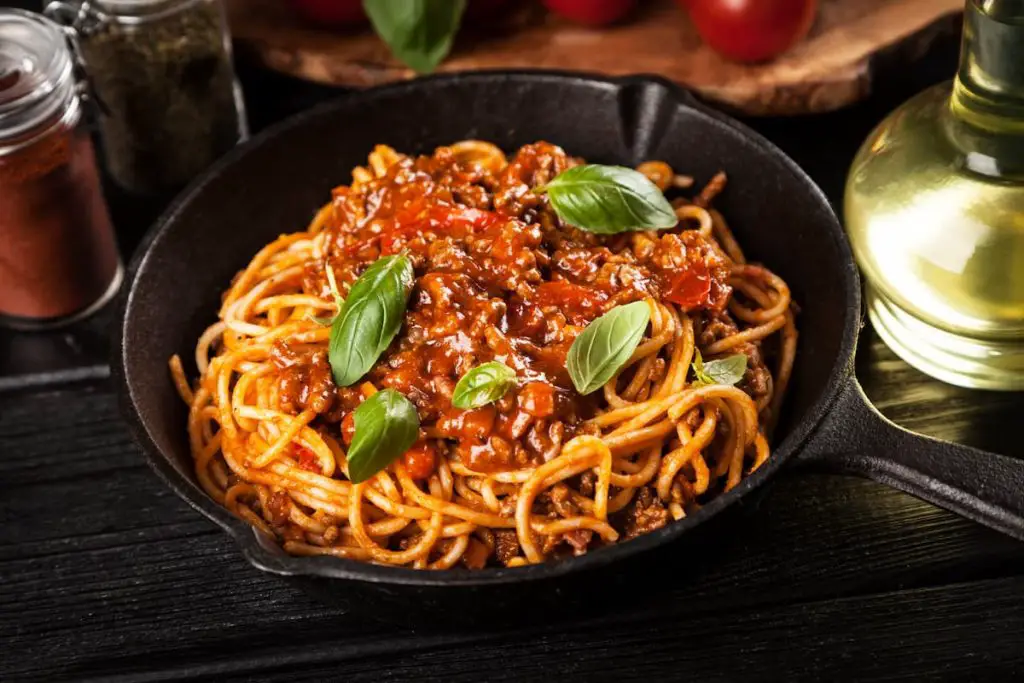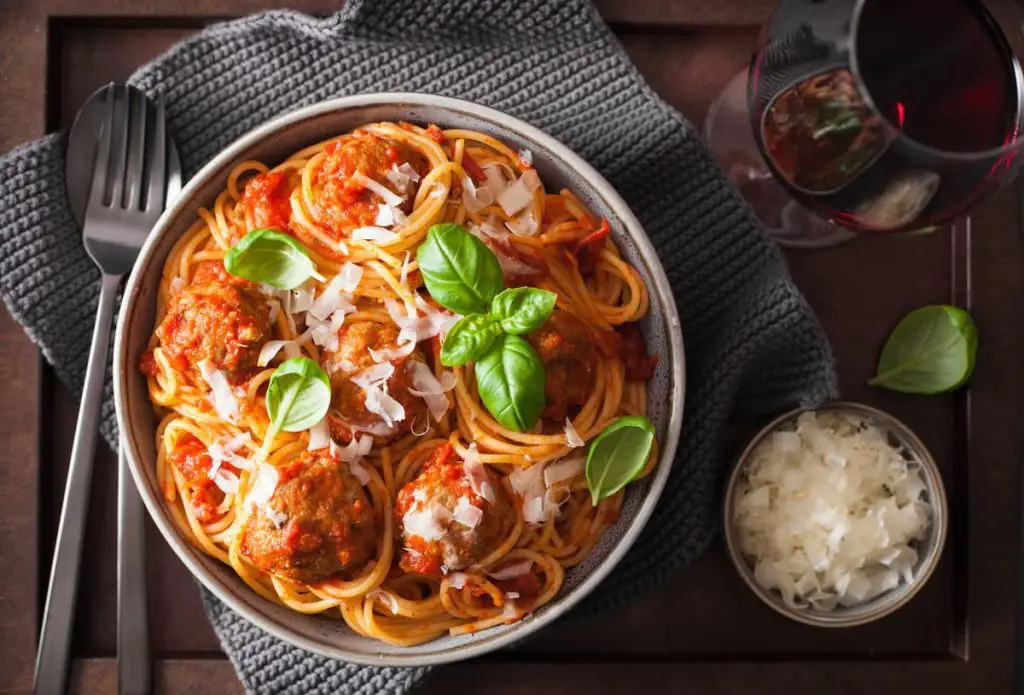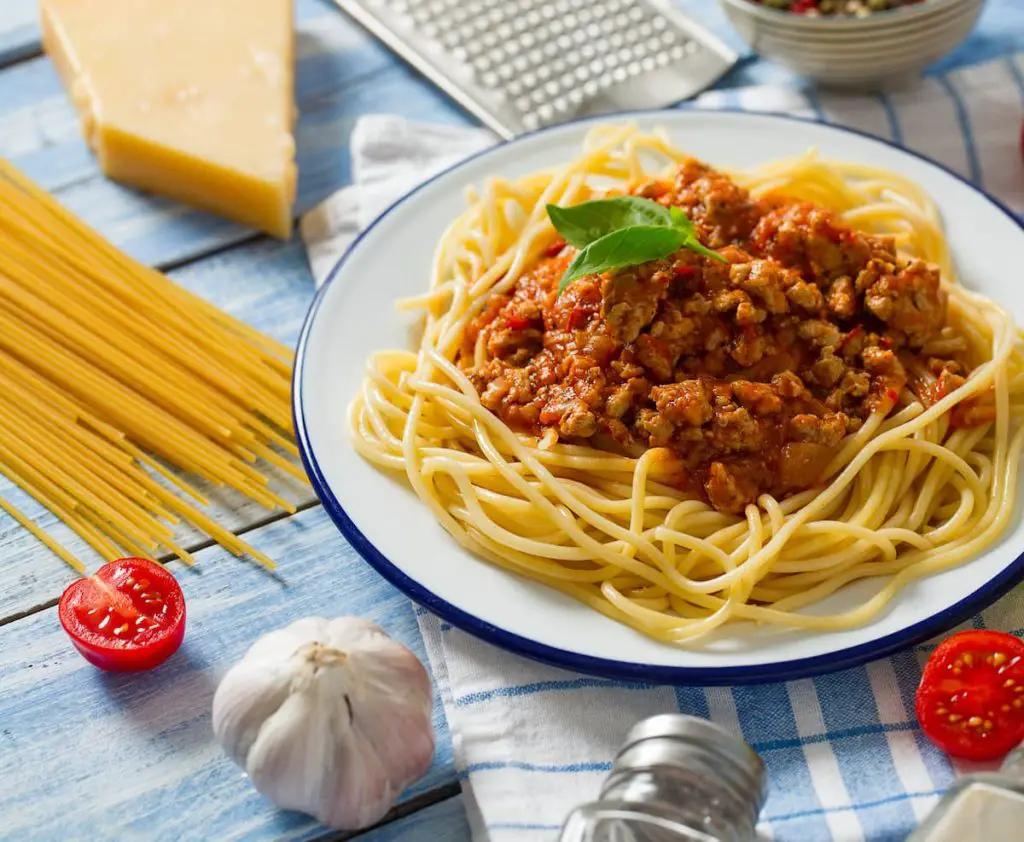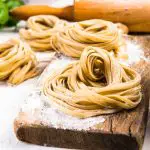Yes, You Can Easily Freeze Spaghetti (What You Need to Know)
Maybe you’ve made extra spaghetti or had some pasta leftover. You wondered if you could freeze it for later, because who wants to waste food?
You can freeze spaghetti. Spaghetti is made from wheat flour and water, usually durum wheat semolina. That means spaghetti is a form of dough, like the dough of a pie, bread, rolls, and pastries—all of which can freeze well. It’s best to use frozen spaghetti within 6 months of freezing.
Spaghetti noodles will stay fresh in your refrigerator for three to five days, but you can store them in the freezer for three to six months. Keep reading to learn how you freeze and thaw spaghetti properly.

You Can Freeze Spaghetti
You can freeze spaghetti because spaghetti consists of water and milled wheat like all forms of pasta. Spaghetti and other pasta made for commercial sale may be enriched with vitamins and minerals, as well.
The most common type of milled wheat used for spaghetti is durum wheat semolina. Egg noodles take their color from egg yolks, but spaghetti and most pasta are white because they’re made from refined flour. However, spaghetti and pasta made with whole wheat flour are darker.
So, spaghetti and other pasta are a form of dough.
Many of us are familiar with frozen bagels, garlic toast, dough for pies, bread, rolls, and pastries. Consequently, it shouldn’t be surprising that we can easily and successfully freeze spaghetti and all other forms of pasta.
Tip: For best results, you’ll want to freeze your spaghetti noodles without sauce. However, if already mixed, know that you can freeze spaghetti pasta and spaghetti sauce mixed together as well.
How To Freeze Spaghetti (Things You Need to Know)
Fortunately, freezing spaghetti is easy. The following discusses how you can cook and then freeze spaghetti properly to ensure its freshness:

Cook the Spaghetti Until It’s Al Dente or Slightly Firm
When you’ve accidentally cooked too much spaghetti or pasta, you may have already cooked it to the texture your family prefers. In that case, you don’t have a choice about the firmness of your pasta when freezing it.
However, if you’ve planned another pasta meal in a week or so, or if you want frozen pasta for quick meals or snacks in the future, you can cook more pasta than you need for one meal and freeze the excess.
In that case, remove the pasta you intend to freeze while it’s still firm (Al Dente). Set your timer for slightly less time than the cooking directions on the package. Then when you freeze and thaw the pasta later for reheating, it will still be firm rather than mushy and too soft.
Drain the Spaghetti in a Colander or Strainer
It’s important to drain the spaghetti thoroughly when you plan to freeze it. Draining prevents ice crystals from forming. Those ice crystals could damage the texture of your spaghetti when you’re ready to remove it from the freezer and thaw it.
Rinse the Spaghetti Under Cold Water and Drain It Again
Rinsing your spaghetti in cold water stops it from continuing to cook. Your spaghetti needs to stay slightly firm if you intend to freeze and then thaw and reheat it. Rinsing your spaghetti under cold water also removes the starch from the exterior that would cause it to clump together.
Toss the Spaghetti With 2 to 3 Teaspoons (10 to 15 mL) of Virgin Olive Oil
Tossing your spaghetti with virgin olive oil is an additional step to keep your spaghetti from clumping together when you freeze it. It’ll be easier to handle the spaghetti when you thaw and reheat it if it’s not stuck together in clumps. Also, it’ll heat through more thoroughly.
Season the Spaghetti, if Desired
At this point, you can add seasonings to your spaghetti if you like. If you know how you’ll use your spaghetti, you can add seasonings that enhance the recipe you plan to use.
You might also have seasonings that you and your family like that you always put on your spaghetti. If you don’t have seasonings that you always use and you don’t have plans for how you’ll use your spaghetti, consider freezing it without seasonings.
Let the Spaghetti Cool
Your spaghetti needs to cool properly before you freeze it. If it’s warm when you put it in the freezer, moisture will condense on the spaghetti and form ice crystals. Again, as I’ve mentioned, those ice crystals can spoil the texture of your spaghetti when it thaws.

Make Nests of the Spaghetti and Place Them on a Cookie Sheet
When you’re freezing long, slender pasta like spaghetti, twirl it on a fork until you’ve collected 1/2 to 1 cup (0.12 to 0.24 L), depending on the serving size you want. Form the spaghetti from the fork into a nest shape, and place the nests on a cookie sheet about 2 inches (5 cm) apart.
Put the Spaghetti in the Freezer for One Hour or Overnight
Place the cookie sheet with the nests of spaghetti in the freezer for at least one hour or up to eight hours. Your nests of spaghetti need to be frozen thoroughly enough that they won’t fall apart when you pick them up to put them in freezer containers.
Divide the Spaghetti Into Your Desired Serving Sizes
If you’d rather not create individual nests with your spaghetti, you can freeze all your pasta together. You should, however, consider dividing your spaghetti into individual-, family-, or large-group-size servings. This will make it easier to select and thaw just the amount of spaghetti you need in the future.
Keep in mind, though, that using this method you’ll need to thaw and use all of the spaghetti in the package at one time.
However, if you have frozen your spaghetti into nests, you can remove just the number of nests you need and leave the rest in the container in the freezer. Another idea is to divide the pasta up into the number of ounces required for your recipes, such as packages of 4- or 8-ounces(0.12 to 0.24 L).
Transfer the Spaghetti to Freezer Bags or Air-Tight Freezer Containers
Once you’ve decided how much spaghetti you want in each package and have divided it accordingly, transfer your spaghetti from the cookie sheet (if you’ve created nests) or bowl to air-tight freezer containers or resealable freezer bags.
To prevent freezer burn, press as much air as you can out of the freezer bags before sealing them.
Use freezer tape to label your containers or freezer bags with details like the amount of pasta they contain and the date you froze it. Your spaghetti will stay fresh for three months. You can even freeze it for up to six months, but the quality can deteriorate over time.
How To Thaw Spaghetti
You have five options for thawing your spaghetti, depending on how much time you have. You can do the following:
- Remove it from your freezer and place it in your refrigerator overnight. This is the best way to thaw your spaghetti or pasta.
- Speed up the thawing by getting the bag or container in a cold or warm pan of water for a few 30 minutes to an hour. Don’t use hot water.
- Add frozen spaghetti directly to a warm dish. Stir the pasta in without over-stirring it. Adding the pasta will cool the dish, so you’ll need to reheat it, but the heat of the dish when you add your pasta plus the heat from reheating will thaw your pasta more quickly.
- Remove your spaghetti from the container or freezer bag and put it in a pan of boiling water. Do this to defrost your pasta even more quickly, just as if you were cooking it for the first time. Don’t leave it very long as the spaghetti is already mostly cooked.
- Put the spaghetti in a microwave-safe container, and then put that container in another microwave-safe container filled with warm water. Place the containers in the microwave for one minute. Set the microwave at 50-percent power to heat the pasta through completely and prevent cold spots at the center. Use the microwave’s turntable or rotate the containers frequently to avoid cold spots due to uneven heating.
How Do I Know if My Spaghetti Is Still Fresh After Thawing?
Check for mold on your spaghetti to know if it’s still fresh after thawing. Your pasta isn’t good anymore if it has mold. If your spaghetti smells weird or has white or dark specks on it, that also means the pasta has gone bad. Don’t hesitate to throw the spaghetti away.
If you need attractive storage for uncooked pasta, check out this Amazon Choice four-piece Chef’s Path Pasta Storage Container bundle. It includes chalkboard labels, a chalk marker, and two pasta measurers. The BPA-free, see-through plastic containers have lids with an air- and water-tight silicone seal and lock on all four sides.
Final Thoughts
Yes, you can freeze spaghetti. By freezing your spaghetti noodle leftovers, you can ensure none of it goes to waste—good for your wallet and the environment!
To freeze spaghetti properly, make sure you always keep it in properly sealed containers or freezer bags. Also, try to consume your stored spaghetti within 6 months of freezing.






